As visitors step into the Louvre Museum, they are met with a grandeur that echoes centuries past. The transformation of this iconic institution from a royal palace to a world-renowned museum is a testament to the evolution of art and culture.
Exploring the halls once graced by kings and queens, one can’t help but marvel at the intricate tapestry of history woven into the very walls. But what deeper insights lie beneath the surface of this storied landmark, and how has its journey shaped our understanding of artistic legacy and heritage?
The answers await those eager to uncover the hidden gems of the Louvre’s past.
Key Points
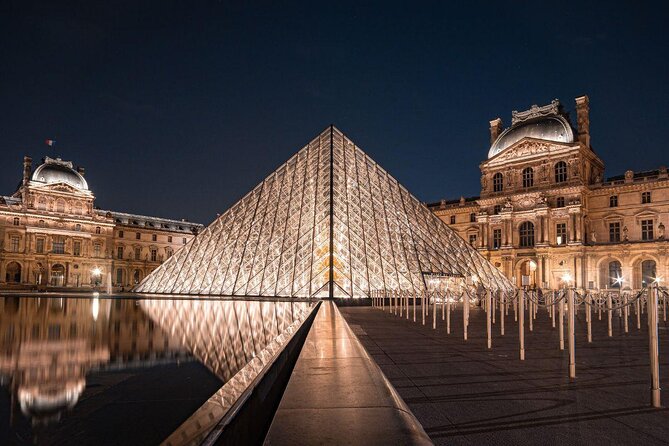
- Louvre’s transformation exemplifies a journey from royal abode to cultural beacon.
- Innovative exhibits and technology redefine visitor experience within the museum.
- The blend of historical significance with modern elements showcases Louvre’s adaptive nature.
- Monarchy’s imprint enriches the museum’s identity, symbolizing a shift from power to art appreciation.
Louvre Museum’s Transformation
Amidst the grandeur of the Louvre Museum’s historical architecture, a modern transformation is quietly taking place. This impactful transformation holds immense historical significance as it bridges the gap between the museum’s past and present.
Through innovative exhibits and interactive installations, the Louvre is reshaping the way visitors engage with its rich heritage. Ancient artifacts and timeless masterpieces are now accompanied by cutting-edge technology, enhancing the overall experience for art enthusiasts and casual observers alike.
The museum’s evolution reflects a commitment to preserving its legacy while embracing contemporary trends in the art world. As the Louvre continues to adapt and grow, this transformation ensures that its profound cultural influence remains as captivating as ever.
You can also read our reviews of more tours and experiences in Paris.
Architectural Evolution Over Centuries
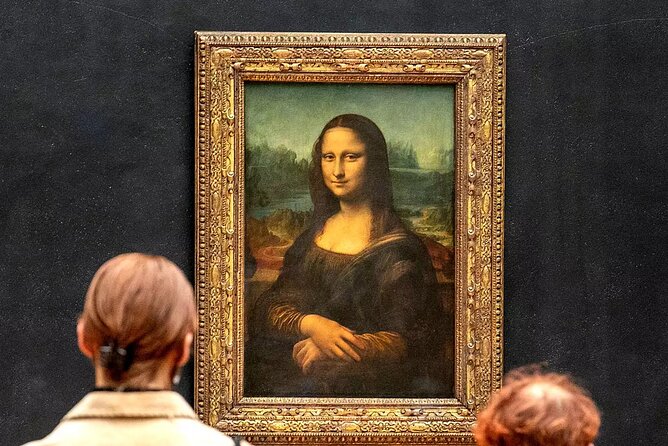
The Louvre Museum’s architectural evolution over centuries showcases a remarkable journey of structural development and stylistic changes that reflect the passage of time and the influence of various artistic movements.
- Evolutionary Changes in Architecture:
- The transition from a medieval fortress to a Renaissance palace under Francis I in the 16th century.
- The expansion and renovation projects led by various architects like I.M. Pei in the late 20th century.
- The incorporation of modern elements while preserving historical significance.
This evolution not only highlights the adaptive nature of the Louvre but also symbolizes its ability to embrace new trends while honoring its rich heritage.
The blend of old and new architectural styles within the museum’s structure encapsulates its enduring legacy and cultural importance.
Royal Residency to Public Showcase
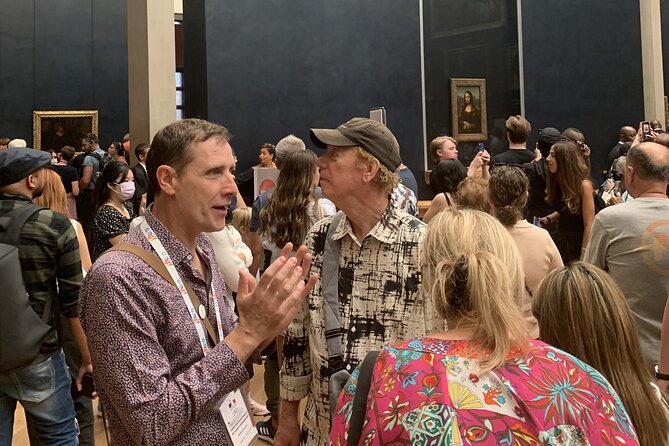
Transitioning from a royal residence to a public showcase, the Louvre Museum has undergone a profound metamorphosis, inviting visitors to explore its rich history and artistic treasures.
Once a symbol of monarchy, the historical evolution of the Louvre reflects a shift towards public accessibility and appreciation of art. From its origins as a fortress in the late 12th century to becoming a lavish royal palace under various French monarchs, the Louvre now stands as a beacon of culture and heritage open to all.
Its modern interpretation as a museum not only houses renowned artworks like the Mona Lisa and Venus de Milo but also serves as a testament to the transformation from exclusive royal quarters to a global hub of artistic expression.
Notable Artworks Through History
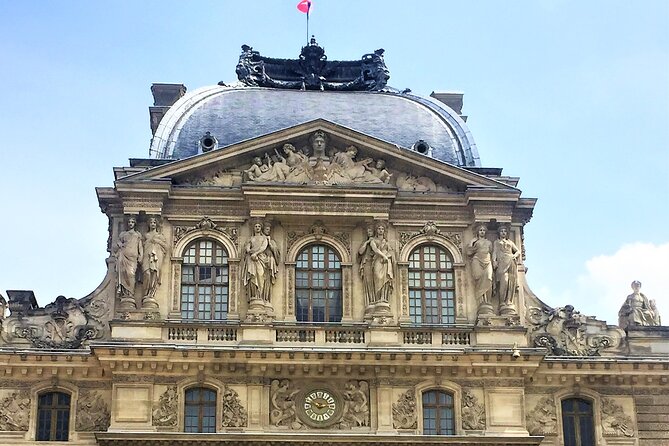
The evolution of the Louvre Museum into a public institution reveals a captivating narrative of renowned artworks that have left an indelible mark on art history. Throughout its transformation, the Louvre has housed some of the most iconic artistic masterpieces, showcasing the evolution of art through the ages.
Here are three notable artworks that have played a significant role in shaping the art world:
-
Mona Lisa by Leonardo da Vinci: This enigmatic portrait has become synonymous with the Louvre, drawing millions of visitors every year to catch a glimpse of its mysterious smile.
-
Venus de Milo: This ancient Greek statue of the goddess of love and beauty stands as a testament to classical artistry and has inspired generations of artists.
-
Winged Victory of Samothrace: This Hellenistic sculpture of Nike, the Greek goddess of victory, embodies movement and triumph, showcasing the mastery of ancient sculptors.
Impact of Monarchy on Museum
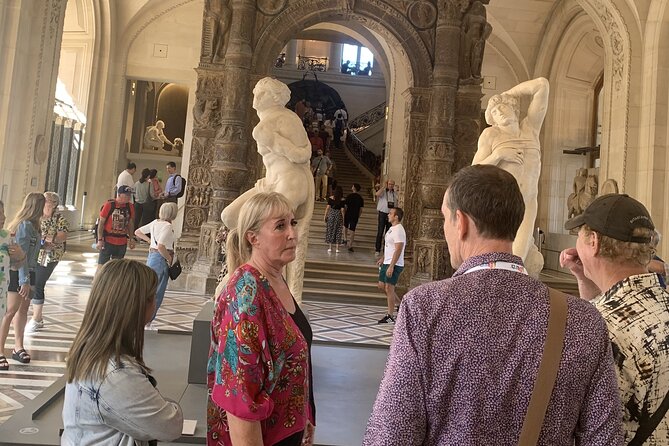
During the reign of the monarchy, profound influences shaped the Louvre Museum’s evolution, leaving a lasting imprint on its cultural significance.
The monarchy’s influence on the Louvre can be traced back to its origins as a royal palace, initially constructed as a fortress by King Philip II in the 12th century. Subsequent monarchs expanded the palace, adding grandiose architectural features and transforming it into a symbol of royal power.
The historical legacy of the monarchy is evident in the Louvre’s layout, with traces of royal apartments and ceremonial spaces still visible today. This royal connection adds a layer of richness to the museum’s identity, emphasizing its transformation from a seat of monarchy to a world-renowned cultural institution.
- Famous Graves of Père Lachaise Cemetery Guided Tour
- Closing Time at the Louvre: the Mona Lisa at Her Most Peaceful
- Eating Paris: Montmartre Food & Wine Tour
- Private Transfer From CDG or ORY Airport to PARIS City
- Private Guided Professional Photoshoot by the Eiffel Tower
- Paris Catacombs Skip the Line Guided Tour
Cultural Significance and Heritage
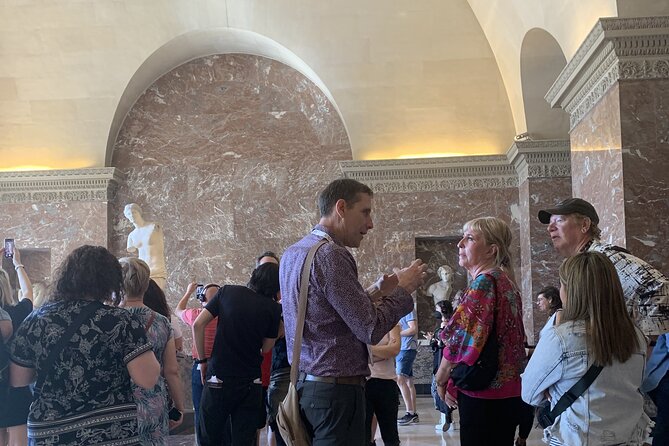
With its rich history and diverse collection, Louvre Museum stands as a beacon of cultural significance and heritage, embodying centuries of artistic evolution.
The Louvre Museum serves as a symbol of cultural preservation, safeguarding invaluable artworks and artifacts for future generations to appreciate.
Its historical legacy traces back to its origins as a royal palace, showcasing the transformation from a seat of power to a world-renowned museum open to all.
Through its extensive collection spanning various civilizations and periods, the Louvre Museum offers a unique opportunity to explore the cultural tapestry of humanity, fostering a deeper understanding of our shared heritage.
Visitor Experience and Insights
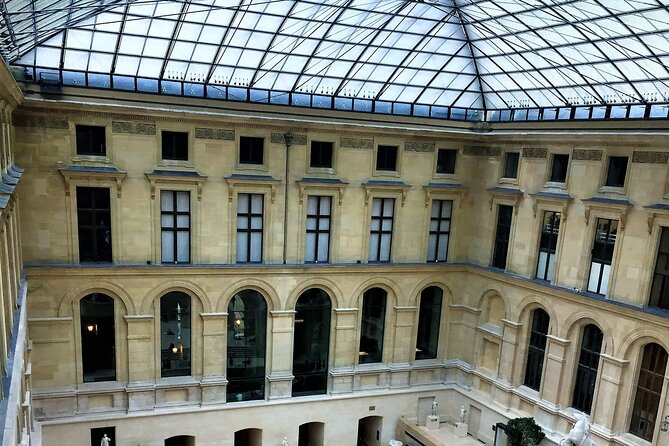
Amidst the grand halls and intricate corridors of the Louvre Museum, visitors unravel the threads of history and artistry, gaining profound insights into the cultural mosaic of humanity.
As they meander through the vast collection of masterpieces, visitor perspectives are enriched by the historical context surrounding each artwork. The museum’s evolution from a royal palace to a renowned art institution provides a unique lens through which visitors can appreciate the significance of each piece on display.
From ancient sculptures to Renaissance paintings, each artifact offers a glimpse into different eras, inviting guests to explore and interpret the diverse narratives woven throughout the galleries. The Louvre Museum truly encapsulates a journey through time, offering a rich tapestry of experiences for all who enter its storied halls.
Future Prospects and Innovations
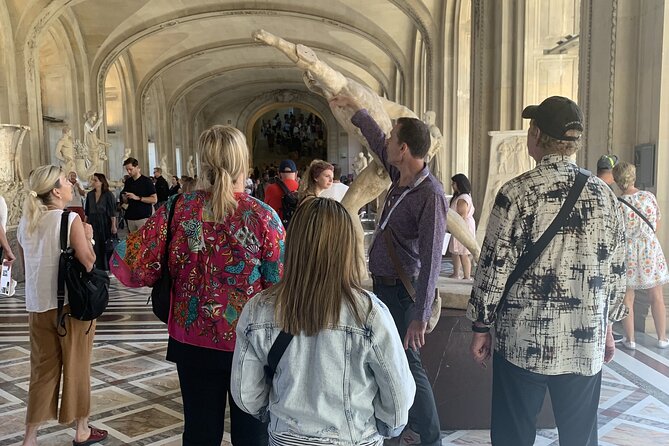
As visitors explore the Louvre Museum’s captivating collection, they catch a glimpse of the institution’s future prospects and innovative endeavors. The museum continues to evolve to enhance tourist engagement and offer a more immersive experience.
Here are some key future innovations:
-
Virtual Reality Exhibits: Introducing cutting-edge technology to provide visitors with interactive and educational experiences.
-
Augmented Reality Guides: Implementing AR guides to offer in-depth information about artworks and historical artifacts.
-
Interactive Workshops: Creating hands-on workshops and activities to further engage visitors of all ages.
These developments aim to elevate the overall visitor experience at the Louvre Museum, ensuring that it remains a leading cultural destination for years to come.
Common questions
What Is the Best Time of Day to Visit the Louvre Museum to Avoid Crowds?
The best time to visit the Louvre Museum to avoid crowds is early morning or late afternoon. These times offer a quieter experience, allowing visitors to appreciate the art and history without the hustle and bustle.
Are There Any Hidden or Lesser-Known Artworks in the Louvre That Are Worth Seeing?
When exploring the Louvre, visitors may uncover hidden gems and underrated masterpieces. The museum is filled with artistic secrets and lesser-known treasures waiting to be admired, offering a unique and enriching experience beyond its famous highlights.
Can Visitors Access Areas of the Museum That Are Not Typically Open to the Public?
Visitors on exclusive tours can enjoy backstage access to areas not typically open to the public. These special experiences offer a unique perspective and deeper insights into the museum’s rich history and hidden treasures.
How Does the Louvre Museum Handle Conservation and Preservation of Its Valuable Art Collection?
The Louvre Museum employs advanced conservation techniques and art restoration methods to preserve its valuable collection. Skilled experts meticulously care for iconic pieces like the Mona Lisa, ensuring their longevity and continued beauty.
Are There Any Special Events or Exhibitions Happening at the Louvre Museum That Visitors Should Be Aware Of?
Visitors should know about special events and exhibitions at the Louvre Museum. They offer Behind the Scenes Tours and Night at the Museum experiences. These unique opportunities provide an immersive and exclusive look at the museum’s treasures.
Final Words
To sum it up, the Louvre Museum’s journey from royal palace to cultural treasure trove is a testament to its enduring legacy. With its impressive architectural evolution and iconic artworks, the Louvre continues to captivate visitors from around the world.
The museum’s rich history, cultural significance, and immersive visitor experience make it a must-see destination for art enthusiasts and history buffs alike. Explore the Louvre and uncover centuries of art and culture in one of the world’s most renowned institutions.
More Museum Experiences in Paris
- Best of the Louvre Museum Private Tour With Monalisa
- Louvre Museum
- Paris: Army Museum Ticket and Seine River Cruise Combo
- Private Trip From Paris to Visit the Caen Memorial Museum Aboard a Van (4/7 Pax)
- Beyond the Louvre Museum – Self-Guided Audio Walking Tour
- Louvre Museum and Mona Lisa Small-Group Guided Tour
More Tour Reviews in Paris
Not for you? Here's more nearby things to do in Paris we have reviewed
- Paris, Latin Quarter Walking Tour With Audio Guide
- Loire Valley Castles Day Trip With Audio Guided Option From Paris
- Emily in Paris Guided Walking Tour
- Vows Renewal Ceremony With Photoshoot – Paris
- Private Van Transfer From CDG to Airport Beauvais
- Paris: Covered Passages Audio-Guided Walking Tour
- Paris: Luxury Mercedes Transfer to Bayeux
- Best of the Louvre Museum Private Tour With Monalisa
- Paris: Romantic Montmartre Exploration Game
- Paris: Eiffel Tower Tour & Seine Champagne Cruise Combo
- Versailles Private Round-Trip Luxury Transfer From Paris
- Paris Like a Local: Le Marais Self-Guided Tour in a Bag
